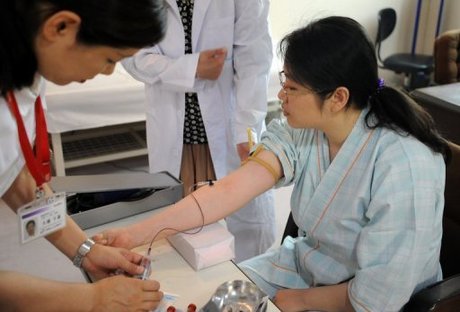As relations between Tokyo and Beijing appear increasingly in need of major surgery, officials in the far north of Japan are hoping the nascent industry of medical tourism can thrive unscathed.
They are quietly confident that a spat over disputed islands will not seriously impact the growing number of relatively wealthy Chinese visiting Japan for its high quality treatment, therefore keeping the lifeblood pumping in an industry that analysts say could one day be worth $7.0 billion a year.
And for a tourism industry that was battered by the tsunami and subsequent nuclear disaster of last year — visitor numbers were down by around a quarter — that might be just what the doctor ordered.
“I came here because Japanese medicine has a very good reputation in China,” 30-year-old Zhang Lan told Agence France Presse, two translators in tow, as staff welcomed her to a well-equipped hospital in Asahikawa in Hokkaido.
Treatments there range from head-to-toe check-ups, with a focus on cancer screening and neurological diseases, to anti-ageing and cosmetic surgery, including breast enhancements and liposuction.
Getting a clean bill of health was at the top of Zhang’s agenda, but she also liked the idea of breathing fresh air in a region known for skiing and nature tourism — a big change from her hometown of Shenyang, an industrial city in northeastern China.
“I’m here this time for a follow-up to the last check-up as the doctor said I needed careful observation of my stomach,” she said of her $2,400 trip, which took place before the current tensions erupted.
“But I really liked the hot springs, the food and the sea the last time I visited. I’m not interested in big cities such as Tokyo and Osaka, because China has many big cities.
“Hokkaido is placid and pastoral. The air is fresh and you can relax here,” she added.
Of the several hundred thousands of foreign tourists who visit Hokkaido annually, the lion’s share are from East Asia, with many keen to see the dramatic mountains, extensive pastures and rich woodlands.
That image is a key selling point for Zhang’s tour operator, Medical Tourism Japan, which last year brought about 270 Chinese customers to northern Japan, a number it hopes will grow.
Most clients chose Hokkaido because it “has the image of being an ‘Asian Switzerland’ to the Chinese,” said company president Katsuya Sakagami.
“I was originally selling medical equipment and came to realise the potential of medical tourism for Chinese people,” he told AFP.
— “Not hostile” to Japan–
A long-running dispute over the sovereignty of Tokyo-administered islands in the East China Sea, known as the Senkakus in Japan and the Diaoyus in China, is a worry for the industry, said Kayo Uemura, researcher at the Development Bank of Japan.
Sometimes violent anti-Japanese protests shook a number of Chinese cities in September after Tokyo nationalised the islands, and airlines linking the two countries reported a fall-off in demand.
Japanese exports to China, its biggest trading partner, tumbled 14.1 percent that month as a result of the row and the impact of a broader slowdown.
“The territorial row could last longer than most Japanese had expected, so we have to watch how many Chinese tourists will come back to Japan, say, by the start of next year,” said Uemura.
Cho Shosho, a senior official and a medical translator at Medical Tourism Japan, said the company had noticed some impact from the spat, including cancellations during the long Chinese holiday at the start of October.
“But we think it is a temporary phenomenon,” she said.
“Wealthy Chinese are not very hostile to Japan and I think our customers want to come to Japan but are staying away because anti-Japanese sentiment is rising at the moment.
“We are still receiving inquiries from Chinese customers and I think they will come back later, probably after the Chinese leadership change (in mid-November).
“It will be like the temporary drop in tourism in Japan after the quake and tsunami disaster last year,” said Cho.
Japan’s medical tourism sector is a sliver of the wider industry with just 10,000 visitors annually, said Uemura.
She said the potential demand could see those figures soar to more than 400,000 with Russians and Americans among those visiting in a market that could be worth 550 billion yen ($7.0 billion).
“But to realise the potential demand, Japan needs a new category for visas for medical tourism and needs to hire people for medical translation and other things necessary to support the industry,” as well as mending ties with neighbours, she said.
Health offerings are just part of the picture, with the industry stoking the real estate business.
One Chinese man who was visiting the historic port city of Otaru near Sapporo, the region’s biggest city, slapped down 30 million yen on the spot for a house while on a medical tour, tourism operator Sakagami said.
“If we provide opportunities for them to enjoy both tourism and a medical check-up, or tourism and investment in Japan, the demand is there,” he added.
Zhang reckons that it is just a matter of time before Hokkaido is flooded with like-minded medical tourists.
“More and more Chinese people are aware of the importance of maintaining their health,” she said.


